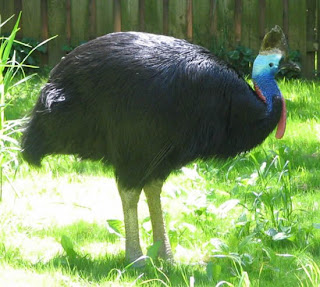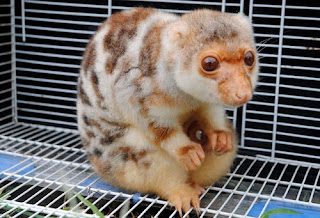 Cassowaries are the world's most dangerous birds and its scientific name is Casuarius. It usually found in Australia and tropical rainforests of North Queensland and New Guinea. Adult cassowary can reach upto 6 feet in height and its weight is about 100 pounds and more. Cassowary lifespan is about 40 to 50 years.
Cassowaries are the world's most dangerous birds and its scientific name is Casuarius. It usually found in Australia and tropical rainforests of North Queensland and New Guinea. Adult cassowary can reach upto 6 feet in height and its weight is about 100 pounds and more. Cassowary lifespan is about 40 to 50 years.
The cassowary’s looks brightly colored blue and purple head and neck with droopy black feathers, and has a large helmet-shaped bony growth on its head. The Cassowary is also one of the most dangerous and complicated animals to keep in the Zoo because of the repeated injuries suffered by Zoo keepers that look after them. Females and males are much related in appearance, but adult females are generally slightly larger than the males.


















